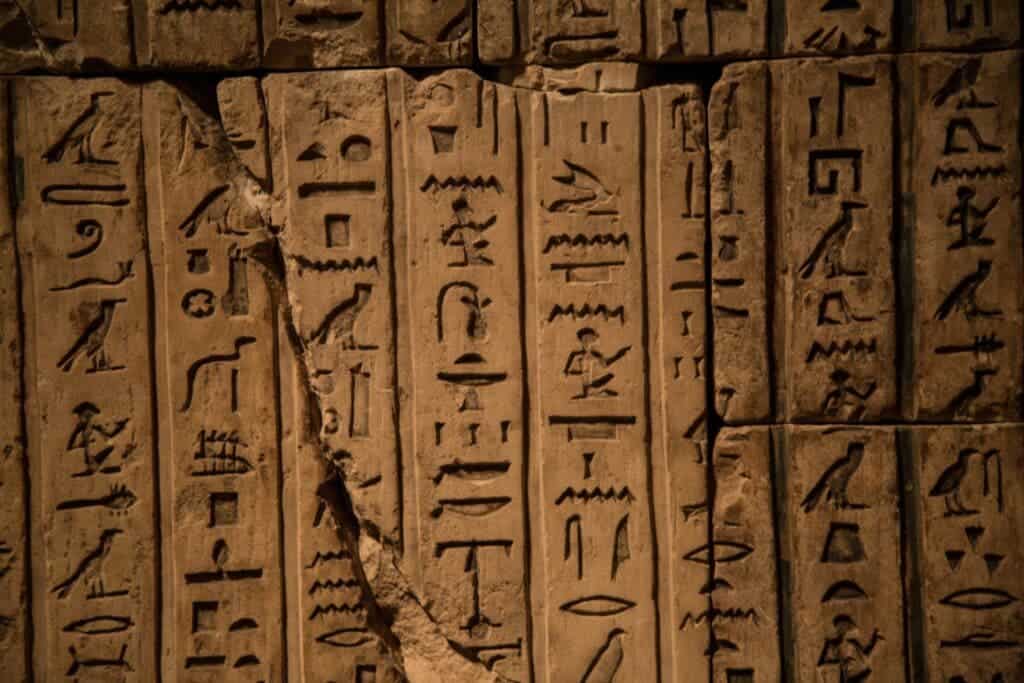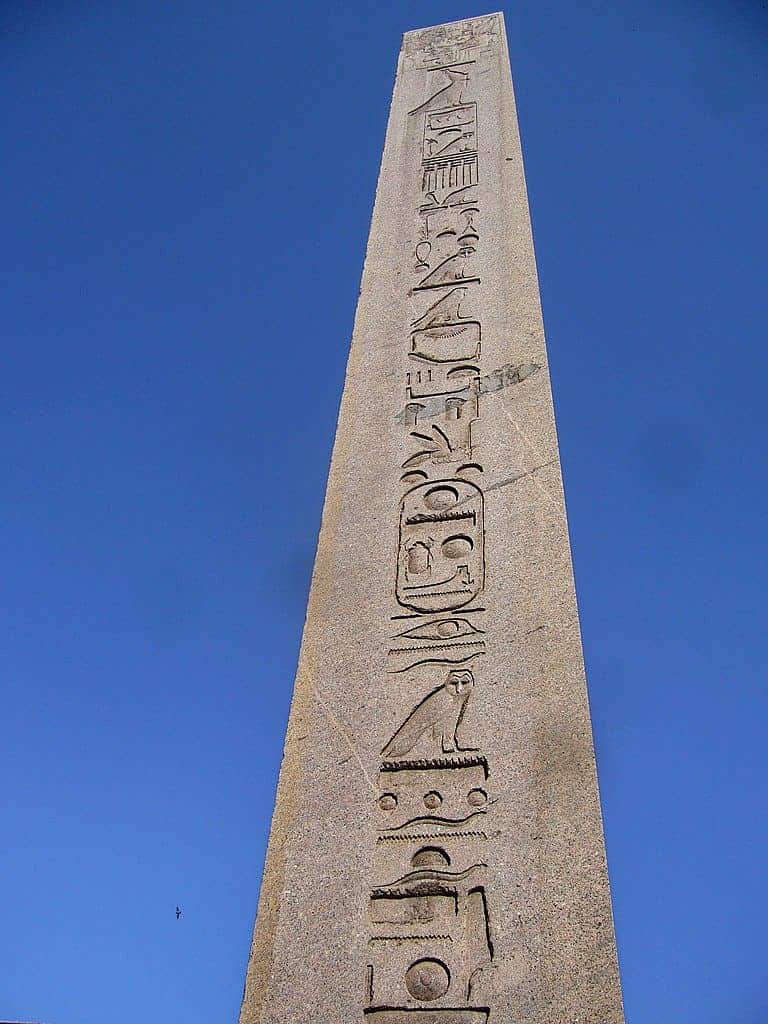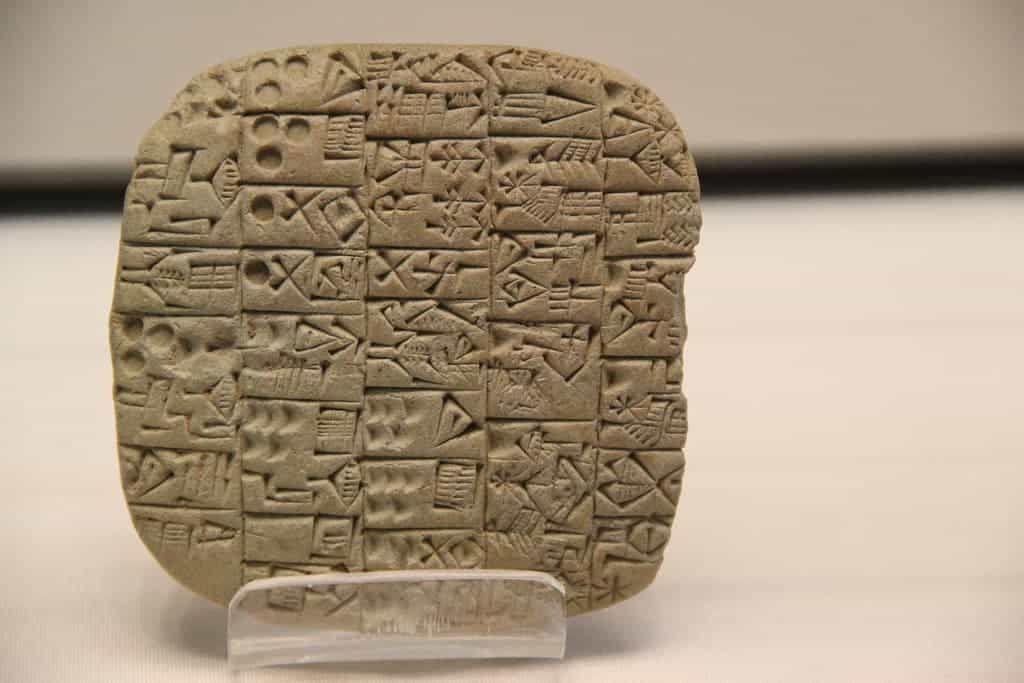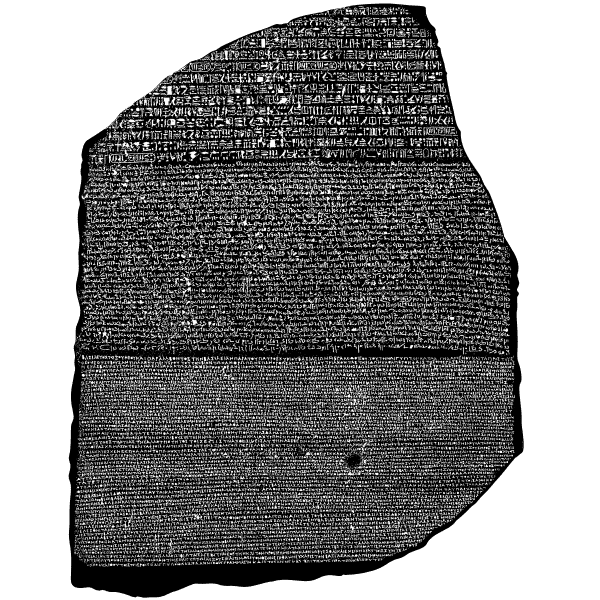Carvings of a bird, bottle, a lion, all around two feathers followed by a forearm. Could such a gaggle of random images carry any sort of meaning? For educated people living in Ancient Egypt, these images were not only dripping with meaning and beauty, but they were in fact their medu netjer, the ‘words of gods’ themselves. To the Greeks, these came to be known as hieroglyphikos, or ‘sacred glyphs’.

These are Egypt’s ancient hieroglyphs, a surprisingly nuanced and complex writing system used by ancient Egyptians to represent their language in auspicious settings such as monuments, religious complexes, and official buildings. It is one of the oldest systems of writing in history and a likely forefather of most script systems in use today.
Egypt’s ancient hieroglyphs capture the imagination of people around the world today and have done so throughout history. The art of interpreting them was lost for a long time — ever since the Christianization of the Roman Empire and subsequent shuttering of all non-Christian temples in 391 — and, despite historical attempts to decipher them, it was only with the discovery of the famous Rosetta Stone by Napoleon’s soldiers in 1799 that the secret of understanding these glyphs was finally pieced back together.
Hieroglyphics definition
To start, you may at one point or another hear the term ‘hieroglyph’ used to describe other script systems, particularly those that employ pictograms — such as the characters used in modern Chinese. This, strictly speaking, isn’t correct. Although many other historical scripts employed glyphs, it is only Egyptian ones that bear the name hieroglyphs, as those are the only ones encountered by and christened as such by the Greeks.
So what exactly are they, and what set them apart from other similar scripts? For starters, Egyptian hieroglyphs had surprising complexity in their use. They form a primarily figurative script, with each glyph representing a concrete or abstract element in a stylized or simplified image that is still highly recognizable.
Exactly what meaning each hieroglyph was supposed to take on was dependent on the context in which it appeared. The signs could serve either as logograms, with each representing a particular word, phonograms, where each represented a particular sound, or as determinatives. These latter ones were signs placed at the end of the word, which would not be pronounced but would help clarify the meaning of the word, especially in the case of homonyms. If we were to transport this concept over to modern English, these determinatives, placed in between square brackets, would look something like ‘case [law]’ versus ‘case [container]’.
Due to the way individual glyphs could be used, the fact that several could indicate the same letter, and the shifts in the language over its immense history (ancient Egypt existed as a unified entity for over 3,000 years), the number of signs used for this script was much larger than what alphabetical systems employ. This number would reach over a thousand different hieroglyphs at various points of history, with a peak estimated at around 5,000 glyphs during the Greco-Roman period, although they were almost always in flux.
This is due to the way hieroglyphs were viewed and employed in Egypt. The reading and writing of hieroglyphs was the appanage of the educated elite. They were used primarily for religious texts or to adorn monuments and other important buildings.

Hieroglyph writing was later adapted into the Hieratic (ancient Greek for ‘priestly’) or Demotic (‘popular’) scripts. These were simplified, cursive scripts developed in the third and first millennium BC respectively, and were written with a reed pen using ink on papyrus sheets. They were used alongside hieroglyphs and weren’t meant to replace them.
This parallel life of hieroglyphs, Hieratic, and Demotic scripts is superbly highlighted by the Rosetta Stone, a stele (text-bearing monument) dating to around 195 BC, that documents a decree issued in the city of Memphis after the coronation of King Ptolemy V and was inscribed with a decree that established the divine cult of the new ruler. This decree is written in hieroglyphs, in Demotic, and in Ancient Greek, almost word-for-word, to allow all citizens of the empire to understand the edict. Ancient Greek was present on the stele as the Ptolemaic Dynasty which ruled Egypt at the time was of Greek-Macedonian descent, placed on the throne of the empire after its conquest by Alexander the Great.
Hieratic was employed mainly for administrative purposes, in business documents, and for literary, scientific, or religious texts. Demotic was used for mundane, day-to-day applications required by the wider Egyptian society.
These used icons that are more similar in nature to letters today; they relied on the same imagery as hieroglyphs to convey different sounds, but the shapes were simplified to the point of abstraction. The evolution of Hieratic and Demotic scripts is a great showcase of how modern writing systems evolved from ancient, pictographic scripts.
History of the Hieroglyphs
We don’t know exactly when they were developed, but we do know they are very, very old. They draw their roots in the artistic customs of the region, and, possibly, from the rock art that prehistoric communities in the Nile delta painted. It’s possible that the idea of a script was ‘imported’ into Egypt starting from the Sumerian cuneiform script, but this hypothesis is highly debated.

Our oldest evidence of primitive hieroglyphs comes from around 3500 BC, and the first full sentence in true hieroglyphs hails from around 2800-2700 BC. Both of these examples were found in tombs, with the primitive ones painted on vessels entombed during the Naqada II period, and the mature ones discovered on the walls of First Dynasty tombs.
Although hieroglyphs themselves were never lost — they have been on proud display in Egypt from time immemorial and were known throughout the Roman Empire, as well as the Middle East and Africa from the Dark Ages to the modern period — the ability to interpret them was very much lost.
Hieroglyphs were viewed as a sacred type of script by Egyptians themselves, and they took on a mystical, almost magical image for outsiders. The knowledge of how to create and interpret this script system was gradually restricted to fewer and fewer individuals (the priest caste) as Demotic and Hieratic became more widespread in Egyptian society and replaced the use of hieroglyphs in practical matters. But it was the Roman Empire that would sever the tradition completely.
Around the year 380, emperor Theodosius I undertook a series of administrative measures that would come to be known today as his “persecution of pagans”. Among others, this also involved prohibiting non-Christian cults and temples from owning property or receiving and administering any type of funds. Although his efforts were quite energetic and particularly aggressive and severe, especially toward the end of his reign, they were not completely successful in wiping out paganism. But they were extremely damaging to these groups’ ability to function and dramatically limited their social influence. Egyptian sects, which centered around the use of hieroglyphs and the institutions necessary in retaining the knowledge of how these are to be fashioned and read, also suffered from this campaign. The tradition of hieroglyph writing rapidly eroded during this time.
As far as we know, the last hieroglyph of Ancient Egypt was carved in 450 AD, at the Temple of Philae. Although we cannot put a definite date on when the knowledge of how to read these signs was completely lost, it was most likely around this time. The last reliable wellspring of information regarding the meaning of hieroglyphs that endured after this time was Horapo’s Hieroglyphica, which retained the correct meaning of a handful of hieroglyphs, but offered incorrect interpretations of quite a few others.
During the third century A.D., hieroglyph writing in Egypt started to be increasingly replaced by Coptic, which was rooted in Greek script. Later, during the Middle Ages, the old Egyptian language itself was replaced entirely by Arabic, completely disconnecting the country from its ancient hieroglyph heritage.
The meaning of hieroglyphs

The meaning of hieroglyphs remained shrouded in mystery for a very long time after this. There were some attempts at deciphering their meaning in the Arab world during the Middle Ages, most notably in Egypt itself and modern-day Iraq, and in Europe during the Renaissance and pre-Modern period, but these were wildly unsuccessful. They were hampered in part by a lack of reliable sources on which to base such interpretations, in part, on the widespread perception of hieroglyphs as magical, mystical elements, and, finally, by several misplaced assumptions regarding how each glyph functioned.
In the nineteenth century, the key to unlocking the hieroglyphs was rediscovered in the shape of the Rosetta Stone. French philologist and orientalist Jean-François “the Younger” Champollion used the Demotic part of the text to understand the meaning of the hieroglyphs. This, at long last, returned the understanding of how to read hieroglyphs to the world, which was published in Champollion’s 1828 book “Précis”.
So how exactly do you read these symbols? For starters, it’s important to note that hieroglyphs are highly dependent on their context, context which guides how each icon is meant to be interpreted in any given situation. In this regard, the reading of hieroglyphs is as much art as it is a rigorous method.
Hieroglyphs are carved in rows, either horizontally or vertically, in orderly rows/columns separated by lines. There are no blanks or punctuation marks, although certain hieroglyphs do appear commonly only at the end of words. The hieroglyphs and signs contained between the lines are read with upper content before content below, from right to left. It is only in rare examples that this reading order is reversed from left to right.
One good clue as to which way a line is meant to be read is to check which directions asymmetrical hieroglyphs face. When a human or animal hieroglyph faces to the left, for example, the text is meant to be read from left to right. I find this to be a very cool idea and a spectacularly ingenious way of conveying additional subtext information to a reader.
That being said, most hieroglyph transcriptions you are likely to see have been normalized into a left-to-right order to resemble our Western reading customs.
Reading hieroglyphs
To start, most hieroglyphs that are not used as a determinant are phonograms — written characters that represent particular sounds. Their meaning is produced by the way they are pronounced, not by the item they represent graphically, although the icon can represent that as well. To give an example of how this would function in English, a drawing of a bee could be used to convey both the word ‘bee’ as well as the letter ‘B’, which is its phonetic equivalent.
So the ‘English hieroglyph’ of a fish would signify the sound “fsh”, the main consonant sound of the word. An Egyptian carver would use the image of a fish to convey this sound that could either stand by itself and mean “fish”, or be the sound “fsh” as part of a larger word.
Secondly, hieroglyphs do not record vowels. Each phonogram (sound) they encode is produced with one, two, or three consonants (being called unilateral, bilateral, and trilateral signs, respectively). The Egyptian hieroglyphic script contains 24 uniliterals and many bilaterals and trilaterals. The sounds produced by a uni-, bi-, and trilateral sign could be, for example, ‘n’, ‘fr’, and ‘nfr’. The name of the infamous queen Nefertiti, for example, is written with the icon ‘nfr’, which means ‘beauty’.
That might sound confusing — how is a reader to glean the meaning of such a text with any accuracy? Well, hieroglyphs offer a helping hand in the form of determinants (which we’ve discussed before) and redundancies. It is often seen in hieroglyphic text that one word is surrounded or followed by characters that encode the same sounds, or part of its sounds. These are meant to explain to the reader exactly how a sign is meant to be read.
For the signs above, more clarity could be added to the meaning of the ‘nfr’ trilateral sign by writing additional bi- or unilateral signs around it. For example, it could be written ‘n’ + ‘nfr’ + ‘fr’ + ‘r’; each of the characters surrounding the main icon gives guidance into how it is to be read.
A determinative further helps in clarifying a word’s meaning. For example, the icons ‘h’+’p’+’hpr’ + ‘r’ + ‘j’, which make up the name of the god Khepri, would be followed by an icon signifying ‘ruler’ or ‘god’, which was not to be pronounced but clarified the meaning of the word to the reader — much like Wikipedia’s disambiguation section. These were particularly important in the case of homophones (words that are pronounced the same way but mean different things). Determinatives are always placed at the end of the word.
Egyptian language made a distinction between the singular, double, and plural forms of words. These were represented quite simply in hieroglyphic writing: one instance of the hieroglyph for singular, two for double, three for ‘multiple’. Doubles and plurals can also be conveyed through the use of two or three strokes next to an icon.
As a logogram, a hieroglyph can denote the object that it is an image of. A vertical line below the icon is used to denote that it is meant to be read this way.
Finally, cartouches. These are oval shapes that are used to highlight names of particular importance and were reserved for the last names of rulers, or the names of deities.
Hieroglyphs today
Hieroglyphs still adorn the walls of ancient Egypt’s monuments, temple complexes, palaces, and tombs. They’re also quite common on souvenirs and other items aimed at tourists or enjoyers of ancient Egypt’s mystical allure, although the quality of translation on such products is debatable at best.
But if you also want to try your hand at writing a line of hieroglyphs, the script is available as a digital font for you to download and use. The Penn Museum also has a nifty app set up that lets you translate your name into Egyptian hieroglyphs — although the order of the icons isn’t exactly historically-accurate, they do place the glyphs in a fancy cartouche, which makes up for it.


